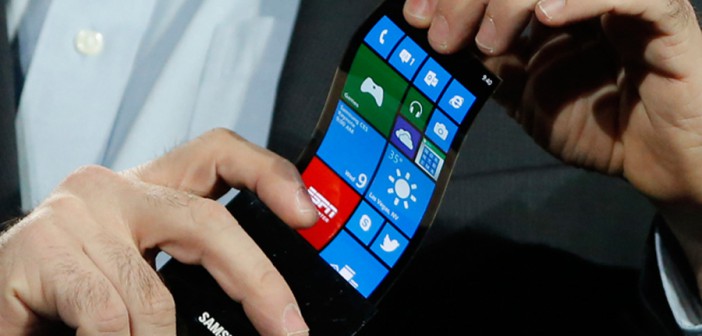Deformable displays have the potential to be every bit as revolutionary as the touchscreen. Here’s why.
Bend your smartphone today, and it’ll probably break. Bend it three years from now, and it could snap a photo or turn a page in an e-book.
So suggests Roel Vertegaal, a professor of human-computer interaction at Queen’s University’s School of Computing in Ontario. Vertegaal thinks that the time is fast approaching when deformable screens will inform not just smartphone design but pretty much all computers.
The big breakthrough that is making flexible displays possible is organic light-emitting diodes, or OLEDs. This display type, used in the Apple watch and many Samsung and LG phones, makes plastic, deformable displays possible.
These screens aren’t just another smartphone gimmick, says Vertegaal, like Samsung‘s weird dual-edge displays. Even in the short term, they could potentially open up a number of UI affordances to device makers, and these have the potential to be every bit as revolutionary as the touchscreen. To prove it, Vertegaal and his team built a prototype based on Android that showed how useful a bendy UI could be.
Called the Reflex, Vertegaal‘s deforming smartphone features a flexible plastic screen, coupled with some haptic motors for feedback. By bending the screen, the Reflex allows users to do things such as quickly flip through pages in an e-book. The more you bend the Reflex, the faster the pages flip, providing a navigation experience more in tune with a physical book. The same affordance can be used to pull back a slingshot in Angry Birds, allowing you to actually feel the resistance growing as you bend the Reflex. And because the screen is flexible and made of plastic, it’s harder to break than your average smartphone, which generally consists of a glass screen, a rigid circuit board, and batteries.
That’s all Vertegaal has shown off for the Reflex so far, but the mind leaps at other UI opportunities. Imagine, for example, being able to take a fisheye photo just by bending your smartphone. How about pinning an email by bending down a corner of your iPhone, almost like a bookmark? Switching keyboards while you’re texting, by lightly flexing the screen? Or fast forwarding or rewinding through a YouTube video the same way? Bendable screens make all of these affordances possible, and more.
When Apple released the iPhone 6s with a force-sensitive screen, we hailed it as an effort to solve the biggest problem in mobile. Smartphone and tablet operating systems have no depth. They are designed to be shallow. For the most part, anything you do on a smartphone or tablet takes you to another screen to do it. One tap, one screen, one action. 3D Touch tried to change the game by introducing the equivalent of a “right click” to iOS, but developers still aren’t doing much with it, and it’s relatively hidden to casual users. Depth could be exploited in a mobile operating system with a deformable screen.
For example, imagine a device where just bending the screen could whisk away UI elements and replace them with others. Instead of swiping through pages of apps on your iOS home screen, you could just scrobble through them by bending your iPhone. Or think about trying to use Photoshop on your iPad Pro: By default, the UI might be programmed to show the simplest, most user-friendly options, but by curling your tablet a little, more sophisticated tools and options could be exposed. “I absolutely think that in the near future, bendable screens will be as ubiquitous in smartphone design as rigid touchscreens,” Vertegaal says in a phone interview.
Practically speaking, it makes sense. Bendable screens are hardier than rigid, two-dimensional screens made out of glass that shatters if you flex it more than a couple degrees, especially when you’re trying to do things like put them in pockets, shove them in bags, and wear them. These days, we sneer at dumb phones. The time may be coming when we talk just as dismissively about rigid phones.
Vertegaal thinks that bendable screens will pave the way for truly organic computing, in which every object is a computer. Imagine a Coke can with a seamless screen wrapped around it. This Coke can could function as its own app, revealing nutritional information about the contents with a swipe of the bar code. Vertegaal is convinced that bendy screens will eventually make this sort of organic computing possible. Because it’s not enough for screens to just be able to curve: They also have to be limber enough to stand up to the rigors of real life.
Coke cans with built-in screens are likely pretty far away, but how long until bendable smartphones are mainstream? Vertegaal pegs them as coming out within the next three to five years. There are some challenges ahead—circuit boards don’t like to be bent, for example—but it’s nothing that can’t be designed around, as Vertegaal has, by making sure that flexible screens and rigid components aren’t sandwiched together. So while bendable smartphones might feel like sci-fi now, give them a couple of generations. When you tuck your iPhone 9 into your back pocket, it may well flex to conform to the contours of your butt.

